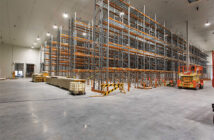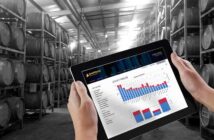
Because of its delicate handling ability the Hidrostal pump is used for food transportation such as fish or vegetables. It is equally able to cope with very different applications like pumping sewage or high consitency materials. The construction of the screw centrifugal impeller prevents clogging of even large solids.
An ingenious pump for harvesting fish, designed to protect them from damage while being hauled from the water, is proving an asset to a surprising variety of food manufacturers.
The Hidrostal screw centrifugal impeller pump incorporates a design first commissioned in the 1960s to transfer fish in South America.
Now it is used extensively for that task, particularly in the UK, but its versatile potential is also recognised by others in the food and beverage industries.
For instance, it is proving ideal for pumping ingredients such as haricot beans, fresh mushrooms and mung beans as well as citrus fruits.
“And there are so many others ingredients which it can handle splendidly that I’m confident it will soon be accepted as invaluable throughout New Zealand,” says applications engineer Dennis Lewis of Pump Engineers NZ of Penrose.
“Although it is already quite widely used in this country – to clear away offal, chicken feathers and other waste – it hasn’t yet really taken off here in the business of food processing. But I’m confident that is about to happen.”
Dave Fuller, manager of Exmoor Trout Farm, is among the many UK users delighted with the Hidrostal pump.
In addition to supplying nearly a million fry to other fish farms, his North Devon operation annually produces 100 tons of prime trout. Quality is of paramount importance as his customers include top stores including Harrods of London.
“We will recover the capital outlay of the pump and grading table within two years even through we are a relatively small operation,” says Mr Fuller.
“ Without this equipment I’d need six additional people to grade and load the fish. The pump is very efficient and the fish are damage free.”
The secret of the pump’s success is in the design of the impeller. The blade’s entrance edge has a low angle and extends in the direction of the fluid stream to the rotating centre. As the fish approach the blade they are guided gently away without damage towards the impeller centre.
With a large curvature blade and low energy gradients, the streamlines remain uniform throughout the impeller. This results in a smooth low-velocity, eddy-free flow into a casing with large radial clearances.
Managers of a food factory at Wigan were equally satisfied with a series of pumps installed for the transfer of dried beans from storage areas and during the initial blanching process before they were transformed into Heinz baked beans.
So were managers at a Gloucestershire factory who needed to pump fresh bean sprouts – mung – 100 metres from the growing floor to the packing area.
The immediate benefits they reported included improved product quality and a reduction in wastage.
“They were also pleased that the maintenance costs are virtually non-existent,” says Mr. Lewis.
“It was the same with fresh-fruit manufacturers in the north of England. They needed an alternative to their costly truck method for moving up to 20 tons of citrus fruit an hour the 50 metres or more from the storage area to the juicers.
“Reliability was essential because the factory is operational for at least 10 hours a day six days a week. They’re completely satisfied that they have that reliability with their Hidrostal pump.
“Overseas there have been so many successful variations of that sort of success that these pumps will certainly be an equally big hit with food processors in New Zealand.”
For more information:
Tel: 09 571 3131
Visit: www.pumpengineers.co.nz
Email [email protected]




























































































